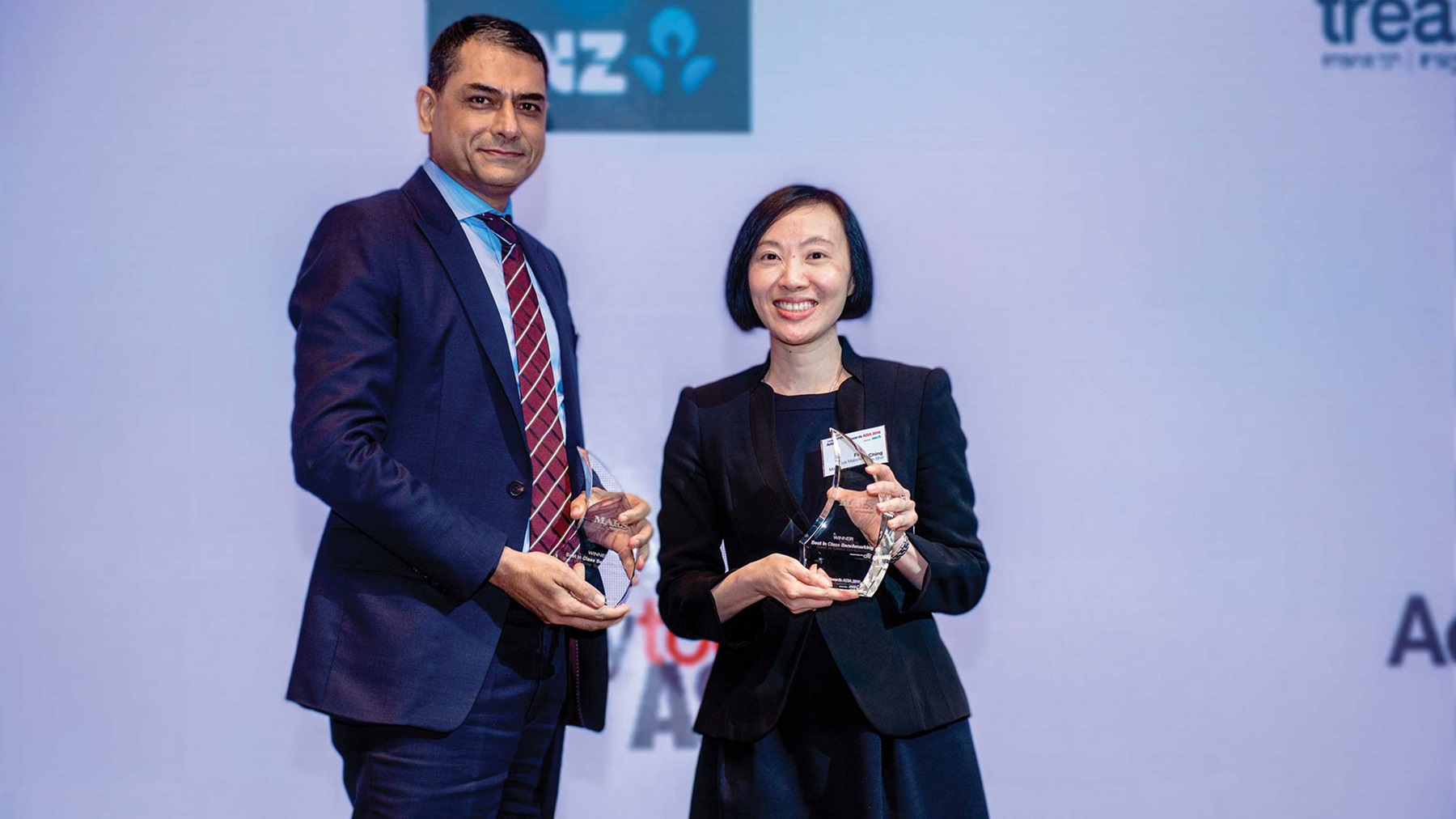
Photo of Rohit Jamwal, Citi and Fina Ching, Mars Foods Inc.
Mars introduced a four-phased approach to its benchmarking exercise which has identified best in class solutions, working with its partner bank, across each of its key business lines. They have realised operational and treasury efficiencies and it is a process of continuous improvement supported by an annual two-day session between Mars and its bank.
Fina Ching
Asia Tax, Treasury and Benefits Director

Mars Foods Inc. is part of Mars, Incorporated, a private, family-owned business with more than a century of history and some of the best-loved brands in the world. Headquartered in McLean, Virginia, Mars has more than US$35bn in sales from six diverse business segments: petcare, chocolate, Wrigley, food, drinks and symbioscience. More than 80,000 associates across 78 countries are united by the company’s five principles: quality, efficiency, responsibility, mutuality and freedom and they strive every day to create relationships with stakeholders that deliver the growth that they are proud of as a company.
in partnership with

The challenge
In Asia Pacific, each of Mars’ business segments operates in multiple locations and in different business units, interacting with a diversified group of suppliers and distributors. This creates various opportunities and challenges with respect to the consolidation of bank services and products across the different businesses.
The solution
Mars’ treasury team worked with Citi to identify opportunities to achieve operational and treasury efficiency by implementing innovative best-in-class solutions, without disrupting the business commercially. Mars was able to leverage Citi’s experience with multinationals on benchmarking exercises. Mars embarked on a journey to simplify, automate and harmonise its treasury processes and tools across the region and focus on key solutions and countries where they could maximise the work effort.
Mars developed a phased approach to its benchmarking exercise based upon the following key stages:
-
Step 1
Identified and mapped the current process for each vertical – accounts payable, liquidity management, accounts receivable, information systems using Citi Analytics.
-
Step 2
Identified best-in-class solutions for each of Mars’ lines of businesses by leveraging Citi’s sector and industry knowledge and analysis from Citi’s Treasury Diagnostics.
-
Step 3
Identified the most suitable best-in-class solutions for implementation in terms of ease, scope, scalability and fit for business purposes.
-
Step 4
Identified the resources required, business goals and technology changes and sought support from internal and external stakeholders. This process was executed by Mars and Citi via a dedicated team as per a joint project plan.
Best practice and innovation
Fina Ching, Asia Tax, Treasury and Benefits Director explains, “The best practice of harmonisation and automation is to take a bottom-up approach – beginning at the business unit level within a country and using data analysis to identify product gaps at this level, while seeking to transfer best practices across countries and segments so as to meet our overarching objective of regional synergies. The benchmarking process also allows Mars to leverage on best practice from an external perspective through the experience of Citi. Another best practice to achieve success is by setting up milestones for all internal and external stakeholders.”
It is our honour to win an Adam Smith Award Asia. It is a recognition of Mars and Citi’s partnership in driving for best in class in treasury management in Asia. We are able to leverage the expertise and external perspective of Citi and build a robust work plan for treasury best practices implementation.
Fina Ching, Asia Tax, Treasury and Benefits Director, Mars Foods Inc
Every year, Mars and Citi meet for “Citi-Mars Day”. During this two-day session, the Global Treasurer, Regional Treasurer, Country Treasurer, and Regional Finance teams from Mars will discuss the results of the previous years’ objectives and service reviews with Citi. Both parties present their business plans, product pipeline and growth plans to each other. This includes a detailed discussion on the internal and external benchmarking with best-in-class solutions, the shortlisting of solutions and working in joint work streams to select solutions that will be implemented over the next 12 month period.
Mars’ benchmarking exercise is unique. It sought to scale existing solutions implemented within its group and used data analytics to fill in the gaps to achieve best-in-class solutions. The process takes into account what has been achieved, what is required and what is achievable, consistent with global treasury policies and objectives. The entire process brings value in terms of future proofing, business integration, upfront resource allocation, and transparency of goals and milestones.
This ensures there are no surprises, which often occurs when treasury teams work in silos and only react to regulatory or system changes as and when required. Moreover, the entire process is measured and monitored with senior sponsorship from both ourselves and our banking partner to ensure success.”
Key benefits
- Best in class solutions identified.
- Collaborative approach.
- Enhances bank relationship.
Key learning points
The key learning is to strive for excellence in setting the benchmark criteria, maximise excellence starting from transferring best practices within a country and across the regions, and ensure delivery of identified solutions through solid project implementation.